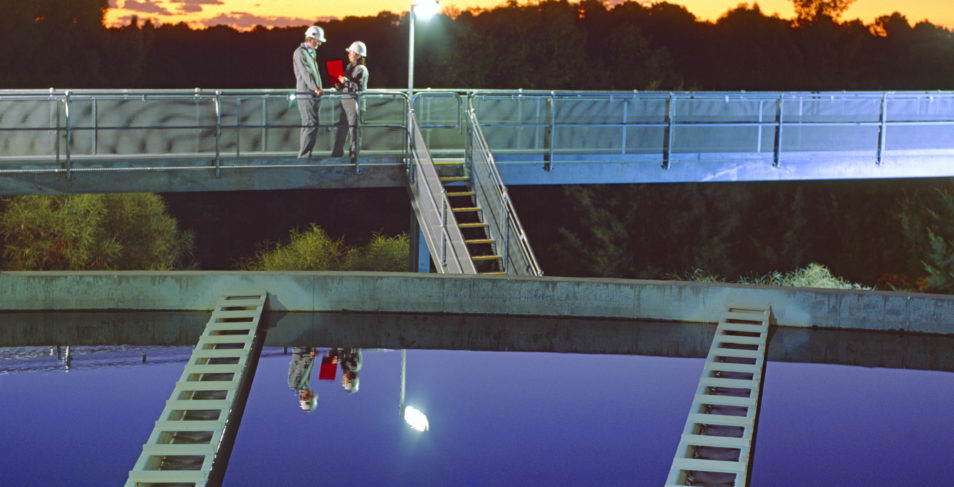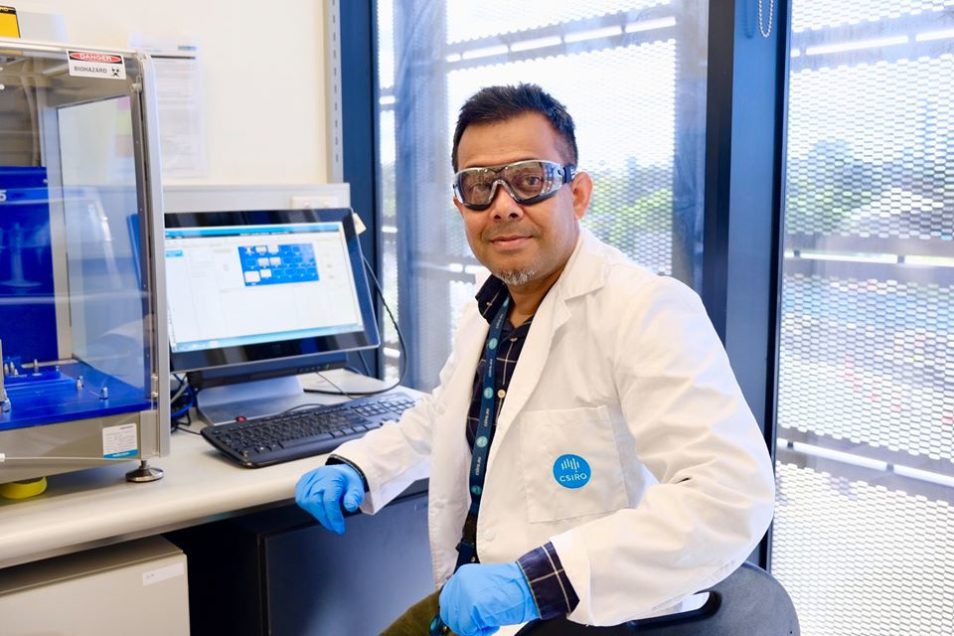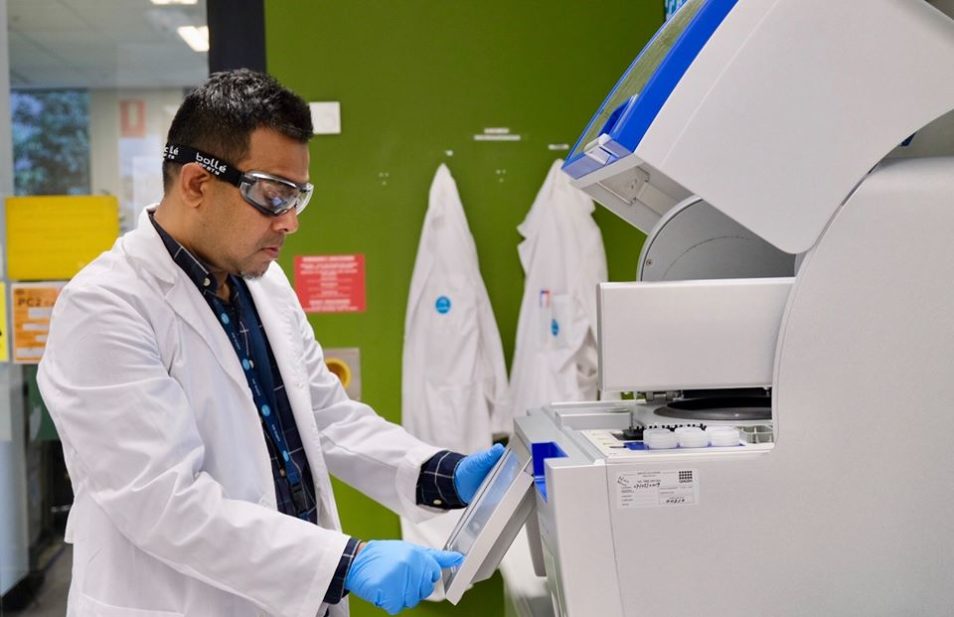
Water Supply Treatment, Perth.
Disclaimer up front – this story is digestible outside of mealtimes. Insert deer-in-the-headlights emoji!
So, now we have that out of the way, we’re talking waste. Australia’s wastewater streams to be exact. These streams are the new front in the war on COVID-19. And no, we don’t mean the pretty mountain streams you can hear in your head, bubbling like a babbling brook.
Tracking COVID-19 in sewage
It’s our raw sewage that has people — dare we say it — excited. More specifically, the genetic signatures of the novel coronavirus known as SARS-CoV2.
Our researchers have joined with The University of Queensland to find fragments of SARS-CoV2 in untreated sewage. This is in waste from people infected with SARS-CoV2 and consequently have COVID-19. This is the first step in developing an early warning surveillance tracking system so we can track how many people in the community have COVID-19 through the presence of the novel coronavirus gene in raw sewage.
It is important to note, based on our knowledge of viruses and water, drinking water is very well protected against all viruses. This includes the new coronavirus.
How does it work?
The researchers collected samples from the inflow to the wastewater treatment plants. This is basically in the pipes that take the waste from your toilet to the plant. The samples from the two wastewater treatment plants tested positive for SARS-CoV-2. We collected these samples during time of peak cases in Brisbane.
The team then analysed the samples back in the lab. They found RNA fragments from the virus in this untreated sewage. RNA is a nucleic acid. Found in all living cells, it carries the genetic information of many viruses.
Next they had to determine these RNA fragments were indeed from SARS-COV2. The researchers did this using a specialised machine to confirm it matched the genetic makeup of the virus.
Monitoring is key
This is a proven method to help us track whether COVID-19 is present in a community. We have completed a proof of concept study using wastewater samples from two wastewater treatment plants in south-east Queensland. Lead scientist for the project Dr Warish Ahmed said these samples represent populations living in the Brisbane region. A scientific paper outlining the proof of concept has been accepted for publication in the Science of the Total Environment journal.
If we know the numbers of fragments in the faeces of individual humans, we would be able to estimate how many people have the virus. Currently this data is lacking so the next step in this research would be to fill these data gaps.
Once we’ve done this, we could monitor when the community is relatively free of COVID-19. We could also monitor the rate of infection over time in wastewater catchment areas to look for spikes and recovery.
This method could help us detect not just where COVID-19 is present, but the approximate number of people infected. And it can be done without testing every individual in a location. This will give us a better sense of how well we are containing this pandemic.

Microbiologist Dr Warish Ahmed is CSIRO’s lead in the project to help us track COVID-19 in sewage.
It’s a co-lab
We hope to develop an Australia-wide surveillance program to leverage our national network of scientific expertise. This includes wastewater treatment plants and local councils. The work builds on research in the Netherlands and the USA.
But wastewater analysis for the surveillance of viruses, is not a new concept. In 2003 the World Health Organisation (WHO) published guidelines for the environmental surveillance of poliovirus circulation. WHO recommended sampling the inlets of wastewater treatment plants.
With the globe now in the grip of the COVID-19 pandemic, this research paves the way for wastewater analysis. So, it could support decisions on how to manage the pandemic.

Dr Warish Ahmed in the lab.
Data talks
This project demonstrates Australia has the capability to deliver timely COVID-19 wastewater surveillance data. It can help inform decisions, inform response actions and assist public communications.
Professor Kevin Thomas from the University of Queensland agrees these methods could deliver timely SARS-CoV2 wastewater surveillance data. “These data will be particularly useful for catchments with vulnerable populations, where testing using other methods may not be feasible.”
“The next step is to build the capacity to deliver a national program. This all helps in the fight to ‘flatten the curve’ and could also detect if the virus is mutating or if new strains are introduced,” he said.
Our scientists and researchers are working around the clock to find a way through this pandemic, constantly thinking outside the square they work in. It’s the reason we are building capacity and flattening the curve, every single day.


27th May 2020 at 3:02 pm
Congratulations for putting humour into science. (Ex CSIRO Researcher.)
27th May 2020 at 2:20 pm
Can this be done for at ports and airports… actually on each vessel… particularly international flights and cruise ships etc
27th May 2020 at 4:43 pm
Hi Rich, thanks for your question.
Yes, this approach can also be used for specific sites, such as nursing home, assets such as boats or planes, and catchments with other vulnerable populations where testing using other methods may not be feasible, such as quarantined or remote communities. We’ve already done some testing on the waste tanks of aircraft and cruise ships which is helping to refine our testing methods.
Kind regards,
Kashmi
Team CSIRO
13th May 2020 at 11:21 am
Has anyone completed research as to whether coronavirus can be transferred from person to person via sewerage spill? If it is present in faeces and urine is it transferable?
13th May 2020 at 3:45 pm
Hi Clint, thanks for your question.
It’s not something our researchers can answer at this stage. Any key developments we will share via our social media channels.
Kind regards,
Kashmi
Team CSIRO.
28th April 2020 at 10:31 am
Seems like a good idea to look for that. OTOH, according to one paper I read, some people have the virus in their intestines and some don’t. So, I’m not so sure we can tell how many people have the disease that way.
17th April 2020 at 7:56 pm
Multiple sewerage works, each covering specific defined areas. Each fed by multiple full on pumping stations with generators and access, each of them fed by smaller pump stations with a standing anti-overflow tank. You could follow a positive result down to an area as small as a few hundred homes in some areas.